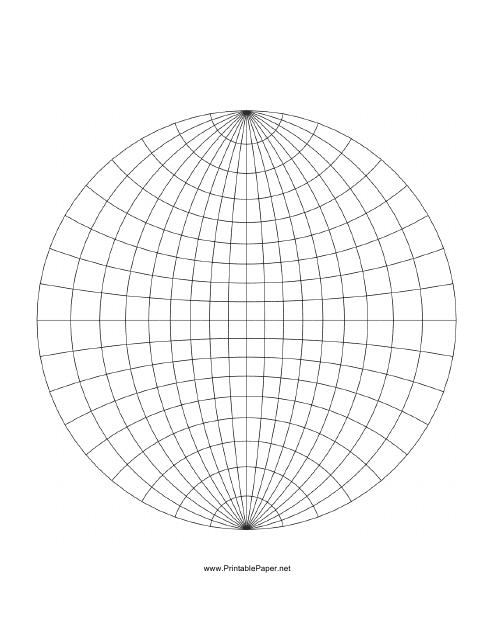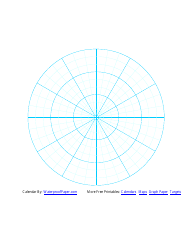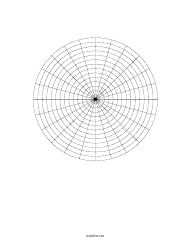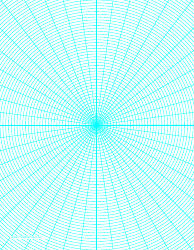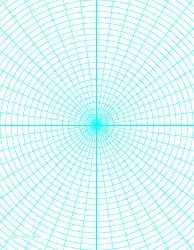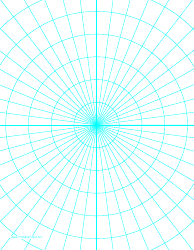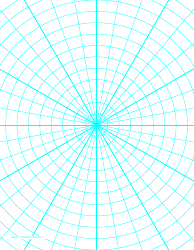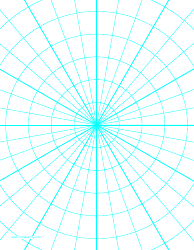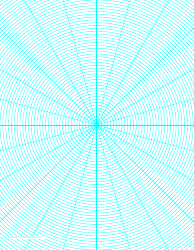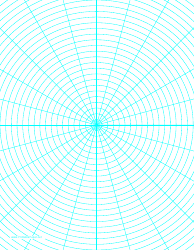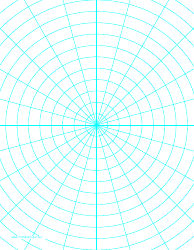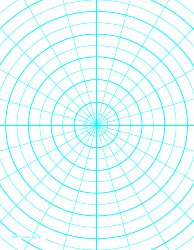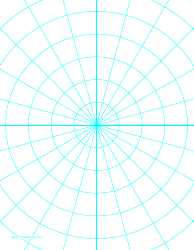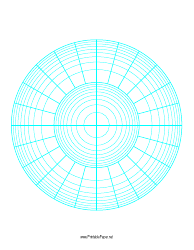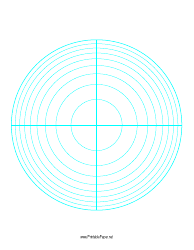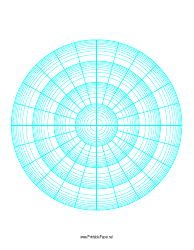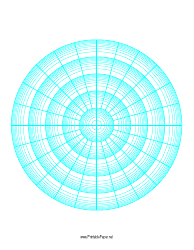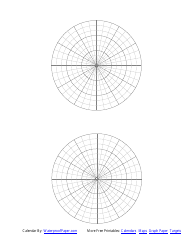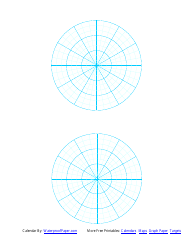Polar Graph Paper - Sphere
Polar Graph Paper - Sphere is a specialized type of graph paper that is used for plotting three-dimensional data or complex mathematical functions. While regular polar graph paper is designed for plotting circle-related data in two dimensions, the spherical version adds a third dimension.
For example, it can be particularly useful in fields such as geometry, physics, astronomy, and engineering for visualizing concepts like spherical coordinates, electromagnetic fields, or celestial patterns.
This graph paper has a grid of concentric circles and lines radiating from the center, resembling longitude and latitude lines on a globe or a map. This helps to plot data or equations in a spherical coordinate system, allowing for a more visual understanding of complex spatial information.
The filing of a Polar Graph Paper - Sphere is typically done by mathematicians, engineers, or students studying in these fields, regardless of the country they are in, including the USA, Canada, India, and Australia. It's a type of graph paper used for plotting three-dimensional figures or mapping complex equations. There is no specific entity or country that solely files this type of graph paper.
FAQ
Q: What is Polar Graph Paper?
A: Polar graph paper, also known as polar coordinate paper, is a graph paper that consists of concentric circles divided into small arcs or 'pie wedges' to allow plotting in polar coordinates. Each concentric circle represents a different radius measuring from the pole, or the center of the graph.
Q: What is a sphere in context of polar graph paper?
A: In the context of polar graph paper, a sphere refers to a three-dimensional graph representing a three-dimensional geometric shape, where all points are at an equal distance from the center. For complex computations or presentations, a graphical representation of a sphere on polar graph paper might come handy.
Q: How to plot a sphere on a Polar graph paper?
A: Plotting a sphere on polar graph paper can be a bit complex as it is a 3D figure. Usually, it is plotted by drawing circles of varying radii to represent 'slices' or 'cross-sections' of the sphere. The radius of these circles corresponds to the 'z' coordinate (distance from the center) and the angle to the 'theta' coordinate.
Q: Can I use polar graph paper for spherical coordinates?
A: While it's more challenging than using rectangular coordinates, you can use polar graph paper to plot spherical coordinates. This often involves converting the spherical coordinates to polar coordinates and then plotting. However, it can be difficult to visualize the full three-dimensional aspects of the data.
